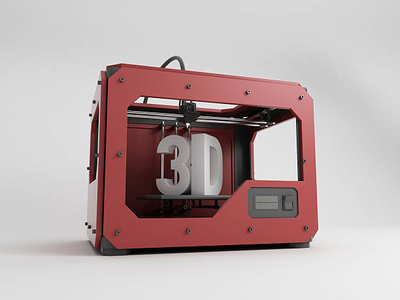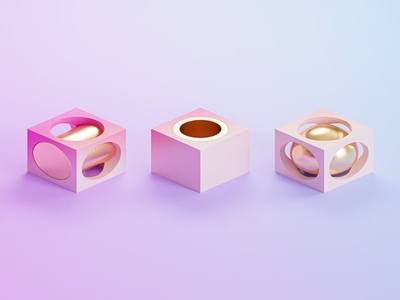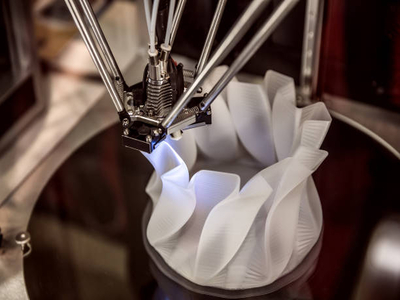How big can a 3D printer print?
The answer is not as straightforward as you might think as various factors come into play when determining the size of a print.
The type of printer, the filament being used, and the settings on your printer all affect the final product and how big you can print.
We’ll explore the topic of 3D printer size, how to choose the right printer for your needs, provide examples of what different printers can create, and discuss the limitations of 3D printing.
Large Format 3D Printers: how big can a 3D printer print?
Before we discuss the benefits and drawbacks of a large format or industrial-sized printer, let’s first define what we mean by “large format.”
In additive manufacturing or industrial printing, there are two main types of machines: those that use powder bed fusion and those that use directed energy deposition.
- Powder bed fusion, the more common type, works by melting metal powder with a laser beam, layer by layer until the desired object is built up.
- Directed energy deposition uses a stream of molten metal to build things from scratch and is generally used for larger objects or for repairing existing objects.
Now that we have defined our terms let’s get back to the question: How big can large format or industrial-sized printers print?
The answer, it turns out, is that it depends. It depends on the type of machine, the size of the build chamber, and other factors.
Powder bed fusion machines, for example, are generally limited to objects that are about the size of a shoebox.
The largest machines have built chambers about a cubic meter in size and can print objects up to a meter long, a meter wide, and a meter tall.
On the other hand, direct energy deposition machines have no real limit on the size of the object they can create.
The only limiting factor is the amount of material they have available to work with.
In theory, you could use one of these machines to create an object that is kilometers long and kilometers wide.
But if you need to create a large object for a specific purpose, a directed energy deposition machine is probably your best bet.
Check out this video on printed large 3D objects and how to increase your build volume:
Read More: How to Waterproof a 3D Print. Learn how to make watertight projects!
How to Choose the Right Printer for Your Needs

When choosing the right printer for your needs, it’s important to take into consideration the type of filament it can use, the build volume it can print, and the settings you can adjust.
Build Volume
The first factor to consider is the build volume of the printer matters or the size of the area that the printer can print in.
The size of the print bed determines the maximum length, width, and height of the object that can be printed.
For example, a printer with a build volume of 200mm x 200mm x 200mm can print an object 200mm long x 200mm wide x 200mm tall.
The larger the build volume, the larger the object a 3D printer can print.
However, if you are only looking to print smaller objects, such as jewelry or figurines, you can get away with a smaller printer.
The Layer Resolution
This is the thickness of each layer deposited by the printer head, and ultimately determines the smoothness and accuracy of the final product.
A higher printer resolution results in a smoother surface finish.
Printer Settings

The final factor to consider when figuring out how big can a 3D printer print is the settings on the printer.
The most important setting is the layer height or the thickness of each layer of filament that is laid down.
The thicker the layer, the faster the print will be.
However, if the layer is too thick, the print might be lower quality than if printed with a thinner layer at a longer duration.
You will also want to consider the infill setting, which is the percentage of the object that is solid.
A higher infill means that it will be more vital, but it will take longer to print.
Now that you know some of the factors to consider when choosing a printer, you can start shopping around for the right one for your needs.
Read More: Can You Pause a 3D Print? Yes – but only for a certain amount of time. Here’s what to know to uphold the integrity of your prints!
Other Factors That Influence 3D Print Sizes

The Diameter of the Nozzle
The diameter of the nozzle dictates how wide each filament strand can be deposited and how large an object can be.
If you want a 3D print with finer details, a smaller nozzle would work better. But for larger pieces, the larger the nozzle, the better.
Type of Filament Being Used
The most common type of 3D printer filament is PLA. It’s made from cornstarch or sugarcane, biodegradable, and easy to print with.
However, it is not as strong as ABS. If you are looking for a printer that can handle more strenuous prints, you may want to consider an ABS printer.
Some filaments, such as ABS plastic, can be printed in larger sizes than others, like PLA plastic, because it has a higher melting point and is less likely to deform during the printing process.
So, by using a material like ABS plastic it is possible to print even larger objects with fewer issues.
In general, the build volume of a printer is the most significant limiting factor in size.
However, increasing the layer resolution, using the right filament, and utilizing a larger diameter nozzle makes it possible to print larger objects than the build volume would otherwise allow.
Read More: How to Cut ABS Plastic. We show you step-by-step how to get the cleanest cuts possible!
Conclusion
So how big can a 3D printer print?
It depends on the type of machine and other factors, but they can generally print objects up to a meter long, a meter wide, and a meter tall.
If you need to create a genuinely massive object, then a machine that utilizes directed energy deposition is the way.
READ MORE